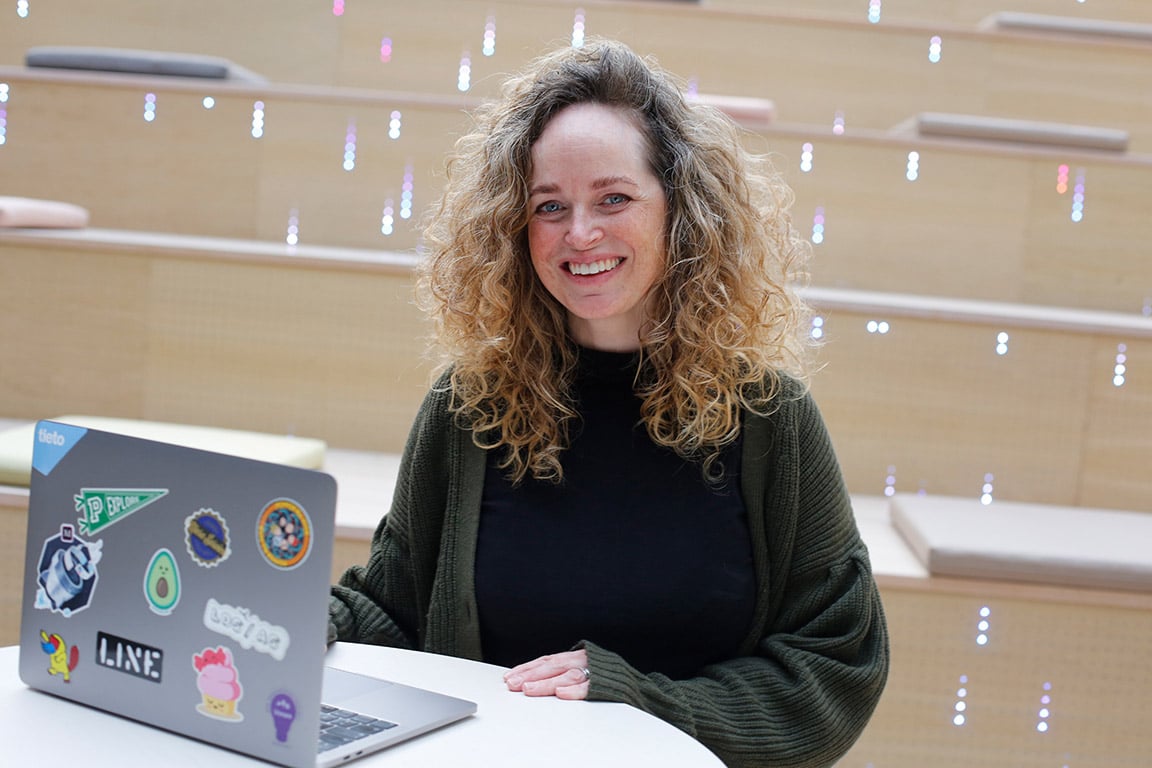
From archaeology student to designer
There are many roads to tech and one cup of coffee can change your entire career path.
Published: 22 September 2022
When it comes to digital platforms, services, or products, the user experience is one of the most crucial aspects to pay attention to. After all, you don’t just design a user interface for someone to see their bank account details. Instead, you solve the problem of how to access sensitive information safely and securely, but without making the solution too complex and hard to use.
“Right now, the tech industry lacks diversity and does not reflect the population. When we are designing these digital tools, systems, and applications, we need to be able to consider all sorts of different user needs,” explains Tietoevry’s experienced UI and UX designer Linnéa Källgård.

Linnéa has also noticed this in practice throughout her work – multiple times. Designing a mobile app for people with cognitive disabilities was a long process, and finding the right solution took a considerable amount of research and iteration. But as a result, the users now have access to information on their own terms instead of relying on old systems that do not consider different needs and ways to seek information.
“At its core, digital solutions are super inclusive. You can use them whenever, instead of relying on specific locations. You can interact with anyone from the comfort of your own home. We just need to ensure that what we design is inclusive as well,” Linnéa points out.
One cup of coffee changed Linnéa’s entire career path
Linnéa talks with such confidence and excitement that it is easy to imagine her as someone with vast experience in technology. In fact, she almost did not enter the industry at all.
“My background is in the advertising industry, and I have studied classical archaeology at Uppsala University and new media design in Hyper Island. I never thought I would fit into the tech industry, being a woman interested in creativity rather than highly technical things,” she says.
A friend thought otherwise and convinced Linnéa to have a chat with the Tietoevry representative to hear more about the projects they are working on. That afternoon coffee 11 years ago turned out to be life-altering for Linnéa.
“I was hesitant as I didn’t know much about the industry. But once I heard more about the company, I realized that they are doing so many projects I always wanted to do too. I took the plunge and felt at home from day one. Now I get to solve problems for real people and use my creativity every day,” Linnéa says.
What it takes to work as a user experience designer
No day is the same for Linnéa, who works with multiple different people within Tietoevry as well as with its clients. It all depends on the project at hand, but most often, she co-operates with front and backend developers, data analysts, project managers, and sometimes other designers. Understanding technology helps, but no programming skills are needed.
“Typically, I work on a couple of projects in different phases at the same time. There’s a lot of planning, workshopping, and co-operation. I utilize Adobe design tools and collaboration platforms such as Figma and Miro a lot,” she says.
As Linnéa proves, there are many routes to working in tech. Some may not be obvious at first, but in the end, every bit of education helps.
“University was more traditional and academic, and I learned to do proper research and use data. Hyper Island was the complete opposite. We did a lot of project-based learning, and I got to hone my problem-solving skills. Both were great experiences, and I am so happy I had them,” Linnéa says.
Be where good begins - check out our open positions!
Read more career stories and download the Being an IT girl guidebook